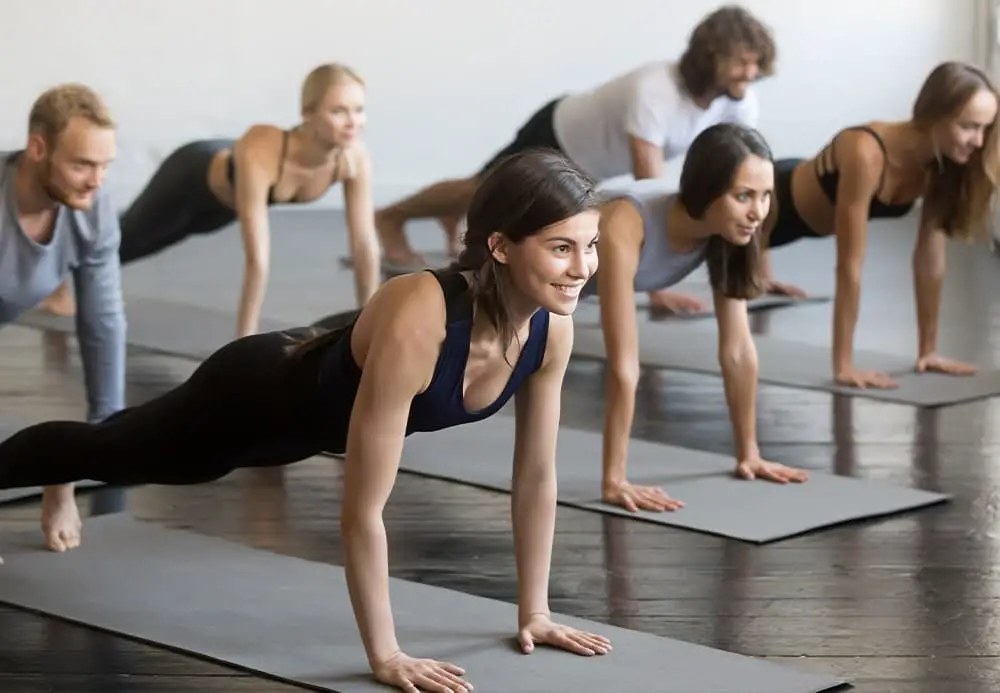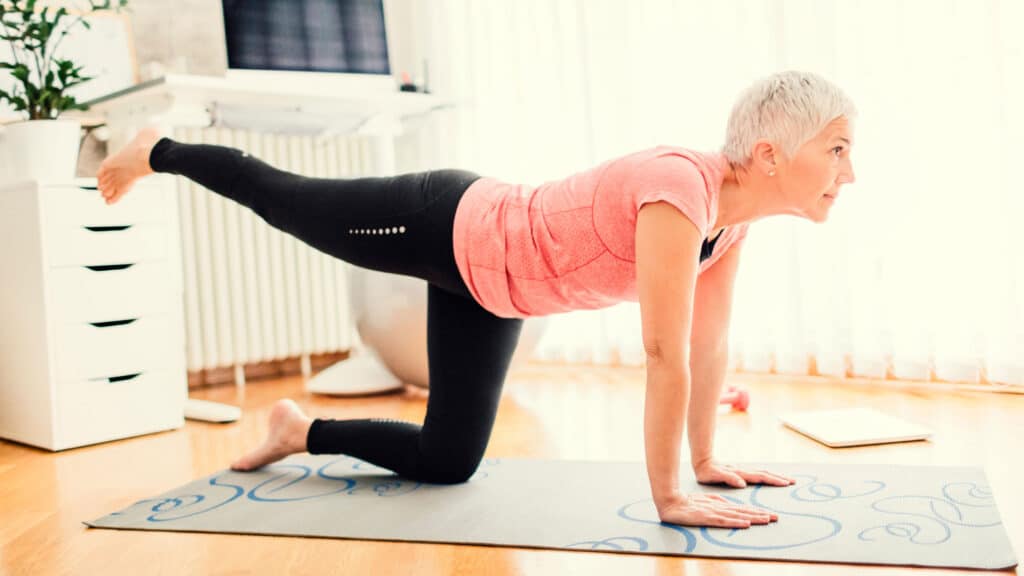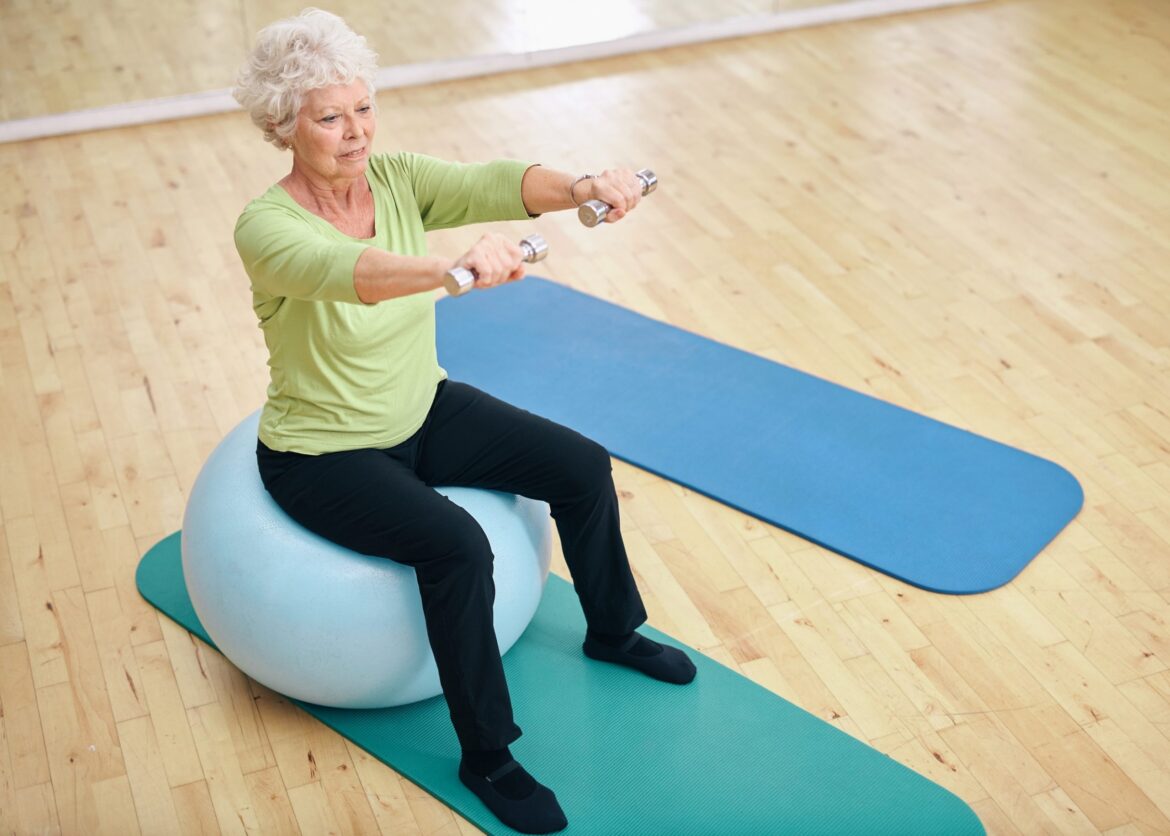Introduction
Is Pilates Good For Bone Density: The role of exercise in bolstering bone density cannot be overstated. Among the diverse array of fitness modalities available, Pilates emerges as a compelling contender. Pilates, originally developed by Joseph Pilates in the early 20th century, is a holistic system of exercise that focuses on core strength, flexibility, and overall body awareness. While it is renowned for its benefits in enhancing muscular strength and flexibility, an intriguing question arises.
To recognize the significance of strong bones in maintaining overall health and quality of life. Bone density, often synonymous with bone mineral density (BMD), refers to the strength training measurement of minerals, primarily calcium and phosphorus, within bone tissue. Higher bone density signifies stronger bones, which are less susceptible to fractures and degenerative conditions like osteoporosis. Osteoporosis, a condition characterized by weakened and brittle bones, is a global health concern, particularly for aging populations.
Traditional methods of preserving and improving bone density have typically centered around weight-bearing exercises, such as weightlifting, jogging, and resistance training. However, Pilates, with its unique blend of controlled movements, body-weight resistance, and focus on alignment, postural awareness, and balance, has gained increasing attention in recent years as a potential ally in the quest for stronger bones.

Can Pilates build bone density?
Done correctly, Pilates exercises can help people with weakened bones by: Increasing bone density when body parts move against the force of gravity. Increasing strength and muscle mass, which in turn help to support the bones. Improving balance, which can help prevent falls that might result in a bone fracture.
Core Strength: Pilates places a strong emphasis on strengthening the core muscles, including the abdominals, back, and pelvic floor. A strong core can improve posture and stability, which are crucial for overall bone health.
Flexibility: Pilates exercises promote flexibility by focusing on stretching and elongating muscles. Enhanced flexibility can aid in joint mobility and reduce the risk of injuries that could impact bone health.
Body Awareness: Pilates encourages mindful movement and body awareness. This heightened awareness can help individuals maintain proper alignment and reduce the risk of falls or accidents that might lead to fractures.
Balance and Coordination: Pilates exercises often incorporate balance and coordination challenges. These elements are essential for preventing falls, which can be particularly detrimental to bone health in older adults.
Is yoga or Pilates best for osteoporosis?
For those dealing with Osteopenia or Osteoporosis, engaging in a specialized Pilates program two-three times per week can be an excellent resource. This type of program not only strengthens muscles, but also promotes bone strength.
Gentle Weight-Bearing: Many yoga poses involve bearing one’s body weight, which can help stimulate bone remodeling. Poses like Downward-Facing Dog, Tree Pose, and Warrior Pose can be adapted for individuals with osteoporosis.
Improved Flexibility and Balance: Yoga promotes flexibility and balance, reducing the risk of falls and fractures. Enhanced balance is particularly crucial for those with osteoporosis.
Stress Reduction: Yoga emphasizes relaxation and stress reduction, which can indirectly benefit bone health. High stress levels can negatively impact bone density, so stress management is essential.
Enhanced Posture: Proper alignment and posture are integral to yoga practice. Improved posture can help reduce the risk of musculoskeletal issues that may exacerbate osteoporosis-related complications.
Can Pilates reverse osteoporosis?
Pilates is a form of strengthening exercises that can help to prevent the disease and, when used with modifications and precautions, may reverse some of the effects of osteoporosis.
Core Strength: Pilates places a strong emphasis on strengthening the core muscles, including the abdominals, back, and pelvic floor. A strong core supports the spine and can improve posture.
Flexibility: Pilates incorporates stretching exercises that enhance joint mobility and flexibility. Improved flexibility can reduce the risk of injury.
Body Awareness: Pilates promotes mindful movement and body awareness. This heightened awareness can help individuals avoid movements that may put stress on their bones.
Balanced Muscle Development: Pilates aims for balanced muscle development, reducing the risk of muscle imbalances that can lead to falls.
Which yoga is best for osteoporosis?
Yoga tips for osteoporosis
Do gentle, low-impact types of yoga such as hatha, yin, or restorative. Avoid strenuous styles such as ashtanga, vinyasa, or power yoga. It’s best to do a small amount of yoga each day rather than a few longer sessions each week. Aim for at least 15 minutes of yoga each day.
Avoid High-Impact Poses: Individuals with osteoporosis should avoid poses that involve significant spinal flexion, compression, or rapid movements, as these can increase the risk of vertebral fractures.
Emphasize Gentle Movements: Yoga practices for osteoporosis should prioritize gentle, controlled movements to minimize the risk of injury.
Focus on Balance and Posture: Yoga sessions should incorporate exercises that enhance balance and improve posture, which are essential for reducing the risk of falls and fractures.
Consult with a Healthcare Professional: Individuals with osteoporosis should consult with their healthcare provider before starting any new exercise regimen to ensure it is safe and appropriate for their specific condition.
Can you rebuild bone density?
You cannot reverse bone loss on your own. But there are a lot of ways you can stop further bone loss, and also reduce your risk of injury if you’ve been diagnosed with osteoporosis. Osteoporosis is a chronic condition caused by the loss of bone density.
Age: Bone density typically reaches its peak in early adulthood and gradually declines with age. Older adults are at a higher risk of reduced bone density.
Gender: Women, particularly after menopause when estrogen levels decrease, are more prone to bone density loss.
Hormonal Changes: Hormonal imbalances, such as reduced estrogen or testosterone levels, can accelerate bone density loss.
Nutrition: Adequate intake of calcium, vitamin D, and other nutrients is essential for healthy bones. Poor nutrition can lead to reduced bone density.
Physical Activity: Weight-bearing exercises, resistance training, and high-impact activities stimulate bone remodeling, helping to maintain or increase bone density.
Medical Conditions: Certain medical conditions, medications, and lifestyle factors (like smoking and excessive alcohol consumption) can contribute to bone density loss.
Is Ayurveda effective for osteoporosis?
Ayurvedic cure for osteoporosis is simple to follow and helps relieve the problem naturally. The “Ayurvedic Approach” to preventing and treating osteoporosis involves restoring balance to all three doshas, and most particularly pacifying Vata energy.
Diet and Nutrition: Ayurveda emphasizes a balanced diet tailored to an individual’s dosha. In the case of osteoporosis, calcium-rich foods, such as dairy products, leafy greens, and sesame seeds, are often recommended. Herbal supplements like Shatavari and Guggulu may also be suggested to support bone health.
Herbal Remedies: Ayurvedic practitioners may recommend specific herbal formulations to strengthen bones and improve bone density. These can include herbs like Ashwagandha, Shatavari, and Guggulu, known for their potential bone-strengthening properties.
Panchakarma: Panchakarma is a detoxification and rejuvenation therapy in Ayurveda. It involves a series of treatments like oil massages, herbal steam baths, and cleansing procedures that aim to remove toxins from the body and restore balance. Panchakarma may be employed to address underlying factors contributing to osteoporosis.
Lifestyle Modifications: Ayurveda encourages lifestyle changes to reduce Vata imbalances. This may involve incorporating practices like regular exercise, meditation, and yoga to improve circulation, reduce stress, and enhance overall well-being.
What happens when you do Pilates regularly?
Pilates promotes mobility and strength of all the major muscle groups in the body in a balanced fashion, whilst also having a key focus on the deep core muscles. It improves posture, flexibility, strength, balance and body awareness.
Improved Core Strength: One of the hallmark benefits of Pilates is its ability to strengthen the core muscles. Regular practice leads to enhanced abdominal and back strength, contributing to better posture and reduced risk of back pain.
Increased Flexibility: Pilates incorporates a wide range of movements that promote flexibility. Regular practice helps individuals achieve greater joint mobility and muscle flexibility, aiding in injury prevention and everyday comfort.
Enhanced Muscle Tone: Pilates engages various muscle groups, leading to improved muscle tone and definition. This not only enhances physical appearance but also supports functional strength.
Better Posture: Pilates emphasizes proper alignment and body awareness. Over time, regular practice can lead to improved posture, reducing strain on the spine and minimizing the risk of musculoskeletal issues.
Improved Balance and Coordination: Pilates exercises often involve balance challenges, leading to enhanced coordination and proprioception. This is particularly beneficial for fall prevention, especially among older adults.
What is the common age for osteoporosis?
Osteoporosis is more common in women. It affects almost 20% (1 in 5) of women aged 50 and over and almost 5% (1 in 20) of men aged 50 and over. Many people with osteoporosis do not know they have it until they break a bone.
Postmenopausal Women: Women are at a higher risk of osteoporosis, particularly after menopause when estrogen levels decline. The average age of menopause in the United States is around 51, and bone density loss tends to accelerate after this milestone.
Men: While osteoporosis is more common in women, men can also develop the condition, typically later in life. Men often experience a gradual decline in bone density starting in their 60s.
Genetics: Family history plays a significant role in osteoporosis risk. If an individual has a family history of the condition, they may develop it earlier than others.
Lifestyle Factors: Lifestyle choices, such as poor nutrition, lack of exercise, smoking, and excessive alcohol consumption, can contribute to the development of osteoporosis at a younger age.
Medical Conditions: Certain medical conditions and medications can accelerate bone density loss. Individuals with conditions like rheumatoid arthritis, gastrointestinal disorders, or hormonal imbalances may be at risk at a younger age.

Conclusion
Pilates excels in enhancing core strength, flexibility, posture, and overall body awareness. These attributes are fundamental for reducing the risk of falls and fractures, especially in the elderly population. Improved balance and coordination, as well as increased muscle strength, can indirectly support bone health by reducing the likelihood of injury.
Moreover, Pilates can serve as a valuable complement to other bone-strengthening activities. Incorporating Pilates into a well-rounded fitness routine that includes weight-bearing exercises may provide a holistic approach to maintaining and improving bone density. By focusing on proper alignment, controlled movements, and mind-body connection, Pilates can help individuals of all ages enhance their musculoskeletal health.
While more research is needed to establish a direct correlation between Pilates exercise and substantial gains in bone density, the evidence thus far suggests that it can be a valuable component of a comprehensive bone health strategy. Ultimately, the decision to incorporate Pilates into one’s fitness regimen should be made in consultation with a healthcare professional, taking into account individual health goals, age, and existing bone health conditions.

